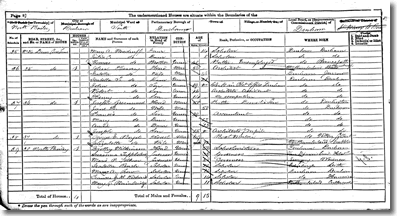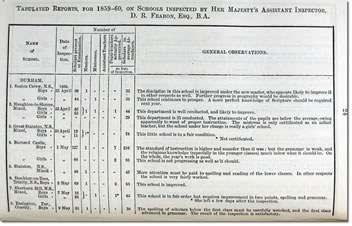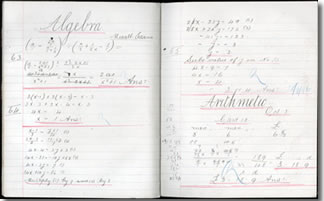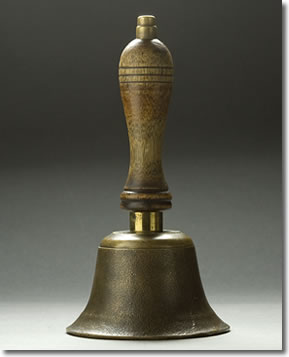
Victorian School Life
Can you imagine what it was like to have been a Victorian school child?
Victorian schools were quite different from the schools of today. We can find out what they were like from log books, work books, photographs, school records and museum objects.
Try to think about some of the differences and similarities. What were the classrooms like? What lessons would you learn? What would the teachers have been like? Would you have worn a uniform?

A group of Victorian boys in a classroom. From ‘Durham: The Photographic Collection’, by Michael Richardson.
Victorian schools
It was not compulsory for children to go to school before 1870. During the early Victorian period it tended to be only the children of wealthy families that went to school or that were taught at home by a governess. Some children from poorer families would attend Sunday schools where they would learn very basis skills but most would have had to earn money to help support their family. In 1870 a law was passed that led to the setting up of ‘Board Schools’ in each area for children between the ages of 5 and 13. However, these schools were not free which caused problems for some poor families.

Illustration of a ragged school for poor children. Image courtesy of www.eriding.net (Click on image to enlarge.)
There were many types of school, including: ragged and Sunday schools where poor children would pay a few pennies to attend; dame schools run by women in their own homes;and public schools where boys from richer families would board. There were two schools on the Bailey in Durham attended by children from Durham City and further afield. We know that the children from some families on the Bailey were sent away to school.

Extract from the 1871 Census for Durham showing the entries for a school mistress and some of her pupils. Image courtesy of The National Archives, ref: RG 10/4966. (Click on image to enlarge.)
In 1880 a law was passed making it compulsory for all children under the age of 10 to attend school but it was not made free until 1891. The classrooms in many of these schools were very large and would hold up to 80 children! The desks would always face the front of the room with the children sitting in rows. The teacher would write lessons on the board and the children would practice their writing using slates. Very little work was done on paper until the children were much older.The teachers were very strict and a cane was often used to punish naughty children.

Extract from a Report into the State of Schools in Co. Durham, 1859-60. DUL Ref: XL 080 BAR/18 (Click on image to enlarge.)
A Victorian school day
A typical Victorian school day would last from 9:00 in the morning to 5:00 at night. The day would begin with prayers and Bible lessons and a register would be taken. Lessons concentrated on teaching the 3 R’s – reading, writing and arithmetic although subjects such as history and geography were also studied. Girls were also taught cooking and needlework whilst boys had woodwork lessons. The children were expected to learn things by rote – repeating things over and over until they were remembered.

Section of an algebra workbook, courtesy of Durham Heritage Centre. Photographed by Jeff Veitch.
If children attended school regularly and learnt their lessons well they were rewarded but children who were late, didn’t concentrate or misbehaved were punished. They could be made to wear a large pointed cone-shaped hat called a dunce’s cap and stand in the corner. If a child’s behaviour was judged to be very bad they were caned with a thin wooden stick.
What do you think it would have been like to spend a day in a Victorian school?

A replica school bell, courtesy of Tyne and Wear Museums service. Photographed by Jeff Veitch.